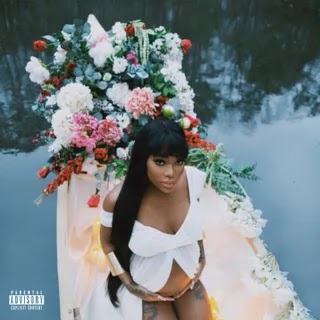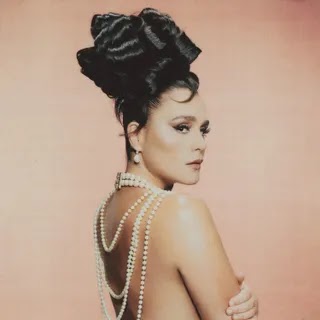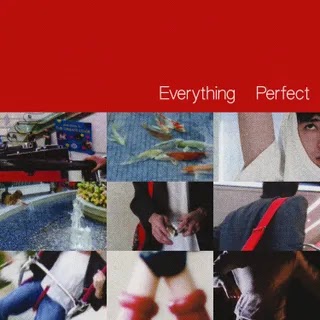Each Sunday, Pitchfork takes an in-depth look at a significant album from the past, and any record not in our archives is eligible. Today, we revisit Lady Gaga’s most divisive and conceptually ambitious album.
In 2013, Lady Gaga was in pain. Ten months into touring the world with her Born This Way Ball, the singer exacerbated a hip injury while performing in Montreal, causing her to cancel all subsequent shows and withdraw from the spotlight. What was reported as a labral tear was actually much worse. “Before I went to surgery, there were giant craters, a hole in my hip the size of a quarter, and the cartilage was just hanging out the other side of my hip. I had a tear on the inside of my joint and a huge breakage,” she said in an interview that July. “The surgeon told me that if I had done another show, I might have needed a full hip replacement.”
There were also creative and business tensions happening behind the scenes. A week before ARTPOP hit the shelves, Gaga split from her longtime manager, Troy Carter, citing creative differences. Later, she suggested greed and doubt: “I was not enough for some people,” she wrote to fans on her Little Monsters forum. Six years later, the album buried under personal career highs like her in-studio kinship with Mark Ronson and Oscar nominations, she tweeted, “i don’t remember ARTPOP.”
At the time, Gaga was guarding herself against the music industry’s intentions for her as she tried to reconcile her status as both the public-facing vessel of a creative hivemind and a singular visionary. The album plays with the friction between vulnerability and persona, object and agent, trauma and ambivalence over a glutted EDM backdrop. It’s an unruly prototype for the polished and hopeful Chromatica but maintains an enduring fanbase who relish its sludge of sonic and theoretical ideas. Although full of her own experience and pain, she invited personal projection from listeners eager to co-opt. “Come to me with all your subtext and fantasy,” she sings on the title track. “My artpop could mean anything.”
The goal was to channel Andy Warhol, only with one essential difference: “Instead of putting pop onto the canvas, we wanted to put the art onto the soup can,” she told the UK telecom company O2 in a promotional interview ahead of the album’s release. This meant commingling her pop aesthetics with fine art, past and present. She collaborated with the pop artist Jeff Koons—known best for his massive mirrored balloon animals constructed in stainless steel—who turned her into one of his Gazing Ball sculptures for the album cover; then, its photograph was spliced with pieces of Botticelli’s famous Renaissance painting, The Birth of Venus. It’s a gesture of turning the inaccessible into the ordinary but with an additional undertone: In the orb’s reflective surface, you see yourself looking, engaging, and perhaps trying to possess something. You’re implicated in the gaze. It’s a theme that runs throughout ARTPOP.
But the art, or the reception of Gaga’s use of art as wildly pretentious, dominated the early conversations about the album. There are many reasons for this: She commissioned a drone-looking garment so she could have the world’s first flying dress. She collaborated with performance artist Millie Brown, known for her work with vomit, at a Doritos-sponsored SXSW performance. She remade conceptual artist Marina Abramović’s Portrait with Scorpion (Closed Eyes) for the artwork to a single and appeared in the Kickstarter promo for Abramović’s eponymous Institute “dedicated to the presentation and preservation of ‘long durational’ works of art.”
Even without all these trappings, the very sound of ARTPOP did not have much of a chance in 2013. Crunchy, aggro synths were met with EDM fatigue from some despite it all pushing beyond simple womp-womp-drop compositions. Others were just underwhelmed. The songs are hooky and encompassing but not with the easy cheese of Katy Perry’s “Roar” or Miley Cyrus’ “We Can’t Stop,” and the lyrics about power and agency are shrouded in metaphor, unlike Lorde’s simple and sincere “Royals.” All of them received an easier public embrace than ARTPOP, whose reviews were uneven across the board. Rolling Stone called it “bizarre,” while The Boston Globe welcomed it as a return to form after the “preachy” Born This Way. At the conclusion of 2013, ARTPOP found one of its champions in veteran critic Robert Christgau who wrote it was “berated by online rockcrit’s ever-shifting gaggle of dunderheads crying ‘insincerity’... this was not only the rawk album of the year for me, it sounded fresh. Really, who needs guitars?”
The idea that pop music should be taken seriously echoes the same struggles of agency and objectification that Gaga does with ARTPOP. If a critic finds value in commercial music made for the masses, does an intellectual examination still make the critic part of the major label’s gain, or does it mean the critic is transcending the expectations of their format? Ultimately, it is not possible for artist or critic to escape the specter of the machine, and an album full of drama-club dubstep does warrant some critical skepticism, especially compared to the feel-good arena anthems of the multi-platinum Born This Way.
Gaga herself was braced for the institutional response. With lead single “Applause,” she opened with the lyrics, “I stand here waiting for you to bang on the gong/To crash the critics saying, ‘Is it right or is it wrong?’” She craves distance from censorious headlines, love from an adoring audience, and freedom from the song’s dissection.
But in the world of ARTPOP, meaning can be quarried out of literally anything, and never is that so apparent than in the director’s cut music video for “G.U.Y.” In it, Gaga gorges on symbols of artifice while also doubling down on the message that the major label ivory tower doesn’t understand what she’s trying to do. Suits clamor for hovering cash before gleefully retreating with their money, leaving a winged Gaga in the dried grass to find her way to recovery. Her refuge is Hearst Castle, where five Real Housewives of Beverly Hills play musical accompaniment in matching pink frocks with bell sleeves as if in worship. They are entertainment but bolstered by this juxtaposition to Gaga in her era of fine art; surrounded by revelry among the Ancient Greece-evoking Mediterranean Revival architecture, they are a reminder that stories with high-octane dramas have been popular since the dawn of theater.
“G.U.Y.” is the album’s best song and was Gaga’s career-best dance track up until her Ariana Grande- featuring trauma-balm “Rain on Me” was released in 2020. From the hook’s bright and buttery vocals to the spiky melodrama of Zedd’s production, the track has the stickiness of traditional pop. Its lyrics play with the power dynamics of sex and gender and affirm the mutability of prescribed identities with lyrics like, “Our sex doesn’t tell us no lies.” The song is a slick laugh and a totally serious implication that the construction of power is absolutely fucked. It has great companions in the spacey “Venus,” which apes from Sun Ra’s “Rocket Number Nine Take Off For the Planet Venus,” and DJ Snake-assisted “Sexxx Dreams,” a disco-bright come-on punctuated with a grotesque pre-chorus of layered Gagas, slinky and feral, singing, “Heard your boyfriend was away this weekend/Wanna meet at my place?”
Sex is an inevitable subject for a project so concerned with power and access, and these themes have a kinship with songs like the snotty “Donatella.” According to Gaga, this paean to the Versace designer is about not caring what people say about you, “not so much about Donatella as a brand as it is Donatella the person, about me as a person, that idea of what the public wants from you.” But with lyrics like, “This purse can hold my black card and tiara,” and, “Just ask your gay friends their advice/Before you get a spray tan/On holiday in Taipei,” it’s way more tongue-in-cheek than revealing. So much of ARTPOP is that kind of tease. Gaga asks early on the album, “Do you wanna see the girl who lives behind the aura?” then shirks being straightforward for almost the entirety of the album. Denying entry is the point. Denying entry has been the point of a lot of what Gaga does. Mostly, it’s a tool of self-preservation.
“When they wanted me to be sexy, or they wanted me to be pop, I always fuckin’ put some absurd spin on it that made me feel like I was still in control,” she says in the 2017 documentary Gaga: Five Foot Two. “If I’m gonna be sexy on the VMAs and sing about the paparazzi, I’m gonna do it while I'm bleeding to death and reminding you of what fame did to Marilyn Monroe and what it did to Anna Nicole Smith and what it did to… yeah.” That “yeah” is presumably a stand-in for Diana, Princess of Wales, a figure who Gaga and her mother idolized and was the subject of “Princess Die,” a piano ballad originally intended for ARTPOP. The track was ultimately scrapped at the urging of execs, but the theme of public perception and possession are still present on the album. In particular, “Do What U Want,” a duet with R. Kelly about a separation between body and personhood. Woof.
The song is absurd. Its concept and execution are appalling. Kelly’s then-known history as a sexual predator—mainly an alleged marriage to 15-year-old Aaliyah and a 2008 recording in which he engaged in sex with and urinated on a 14-year-old girl—was treated more like a barely-visible scar than the open wound it actually was. But it wasn’t only Gaga doing this at the time. Until later that year, Kelly’s behavior was largely overlooked, and Gaga was flippant about his reputation. When asked about the controversial collab at a Japanese press conference, she said they both had “very untrue things written about [them], so in a way, this was a bond between [them].” This grim comment, with its soft-touch victim-blaming, also feels in service of the song and its presentation.
For a performance at that year’s AMAs, she and Kelly did Oval Office-affair burlesque, pantomiming fellatio that invoked Monica Lewinsky and Bill Clinton, all while Kelly lyrically hoisted up John F. Kennedy’s affair with Marilyn Monroe. A never-released music video directed by Terry Richardson featured Dr. Kelly hosting a softcore orgy with Gaga’s anesthetized body, a nurse straddling the passed-out pop star as she dances a lobster next to Gaga’s sheet-covered breasts. “[She] had a video directed by an alleged sexual predator, starring another sexual predator,” a source told Page Six after a 30-second clip was leaked. “With the theme, ‘I’m going to do whatever I want with your body’? It was literally an ad for rape.”
To be clear: In 2022, there is no such track when you stream the album. A month after ARTPOP was released, The Village Voice published an interview with journalist Jim DeRogatis. The Chicago reporter was a witness in Kelly’s 2008 child pornography trial—for which the singer was acquitted of all charges—and has done extensive investigating into Kelly’s history of sexual predation on young girls. Earlier this summer, Kelly, who is 55, was sentenced in New York to 30 years in federal prison for racketeering and human trafficking; he still faces trial in his native Chicago for federal charges of “producing child pornography and luring minors into sex acts” according to The New York Times.
A “Do What U Want” redux performed on The Voice with Christina Aguilera was an attempt to bury the blunder, but it wasn’t until 2019 and dream hampton’s Surviving R. Kelly Lifetime series debuted that Gaga truly disavowed the song via Twitter. “I stand by anyone who has ever been the victim of sexual assault,” she wrote. “As a victim of sexual assault myself, I made the song and video at a dark time in my life [and] my intention was to create something extremely defiant and provocative because I was angry and still hadn’t processed the trauma that had occurred in my own life. I think it’s clear how explicitly twisted my own thinking was at the time... I’m sorry, both for my poor judgment when I was young and for not speaking out sooner. I love you.”
Perhaps the flash of fine art, the salacious party tracks, and this foul duet were part of a distraction—creative compartmentalization that we survivors of sexual assault and rape have a tendency toward. But that pain has its place with the rubbery “Swine,” a track Gaga said “put a lot of rage into [the] album” and that it would be hard to let go of it. When she did, she wasn’t shy about what it meant.
“The song is about rape [and] demoralization,” she told Howard Stern. “I had a lot of pain that I wanted to release, and I said to myself, ‘I want to sing this song while I’m ripping hard on a drum kit, and then I want to get on a mechanical bull, which is probably one of the most demoralizing things that you can put a female on in her underwear, and I want this chick to throw up on me in front of the world so that I can tell them, ‘You know what, you can never ever degrade me as much as I could degrade myself and look how beautiful it is when I do.’”
Pain is ultimately a stronger foundation for art than a soup can. And while ARTPOP does trade in camp—i.e, rhyming “Uranus” with “ass is famous”—the album, as it now stands, is at its best when it collides with what’s hurt her. It just doesn’t need to be drenched in symbols and winks. When she endeavors to reveal how hard it has been to survive and begs to be loved clean on the piano ballad, “Dope,” she herself becomes the reference. Reminiscent of The Fame Monster’s “Speechless,” a self-described “plea” to her father about his drinking, and a suggestion of what was to come on the gritty Joanne, she sings achingly for forgiveness from her loved ones around whom she’s smoked herself numb. The confessional is too dark to be a stripped-back breath, but it does reveal that Lady Gaga’s best when she’s centering herself.
















0 comments:
Post a Comment